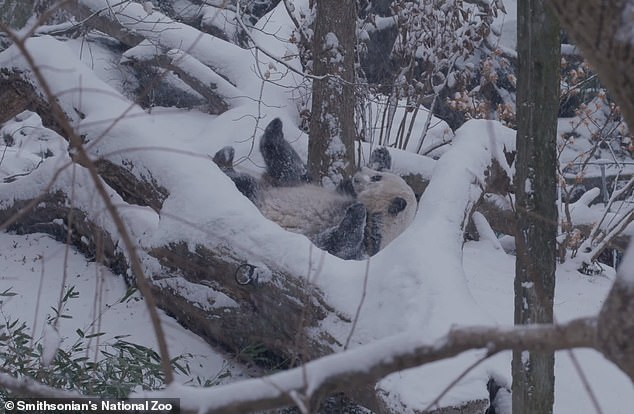
The severe winter storm that pummeled parts of Washington, D.C. with as much as six inches of snow on February 20, 2019 had most residents scrambling for the safety and warmth of their homes. However, Smithsonian's National Zoo's giant panda Bei Bei was not among them. The adorable three-year-old had the time of his life playing in the mounds of fresh powder that helped Washington, D.C. retain its stature as the snowiest major city on the US East Coast this year.
In the video released by the zoo's officials, the endearing giant panda is seen rolling in the snow, climbing on trees, and leaping off branches. His mother, 20-year-old Mei Xang, kept a watchful eye on her juvenile son while snacking on some delicious bamboo. Though father Tian Tian was nowhere to be found, it was he who first exposed a reluctant Bei Bei to snow in January 2016, when the giant panda was just six months old.

Born on August 22, 2015, Bei Bei, which means "precious treasure" in Mandarin, is the result of a cooperative breeding partnership between the Smithsonian's National Zoo and the China Wildlife Conservation Association. Under the agreement, all giant pandas born to Mei Xang and Tian Tian, who are on loan from the Chinese government, have to be sent to the Wolong Nature Reserve in China's Sichuan Province at age four to prepare them for breeding.
Though separating Bei Bei from his parents at such a young age may appear cruel, zoo officials say he is unlikely to miss them. That’s because, in the wild, giant pandas typically spend between 18 months and two years with their mothers before leaving to lead a solitary life. Zoo-born Bei Bei has followed a similar path and has been living in his own enclosure since early 2017. Hopefully, Tian Tian and Mei Xiang will have another cub before the adorable giant panda turns four.

Endemic to China, giant pandas are easily recognizable by the distinctive black patches around their eyes, over their ears, and across their necks and limbs. Unfortunately, thanks to climate change and loss of habitat, they are the rarest members of the bear family and one of the most endangered animals in the world. The latest consensus, conducted in 2014, discovered just 1,864 giant panda specimens in the wild. Though low, it is a significant improvement since the 1970s, when the animal's numbers had dwindled to less than 1,000. Hopefully, with some help from Bei Bei, and his older siblings Bao Bao and Tai Shan, who are already at the Wolong Nature Reserve, the population of the playful, cuddly bears will continue to increase.
Resources: CNN.com Dailymail.co.uk, nationalzoo.si.edu,smithsonianmag.com.
